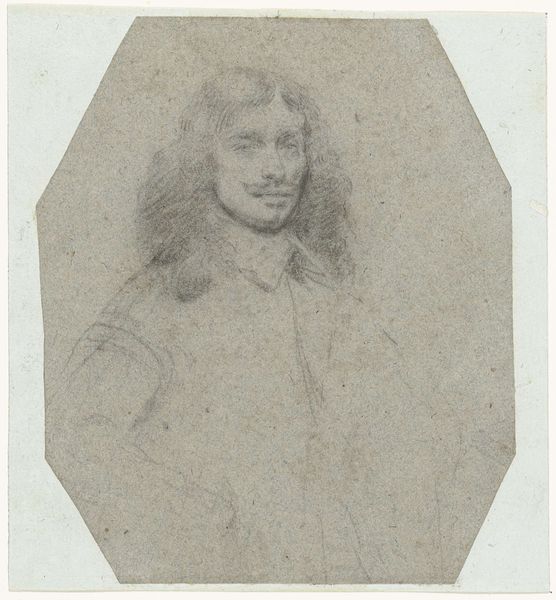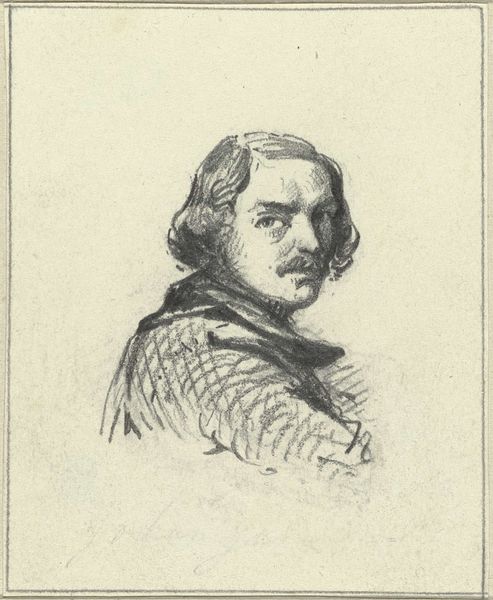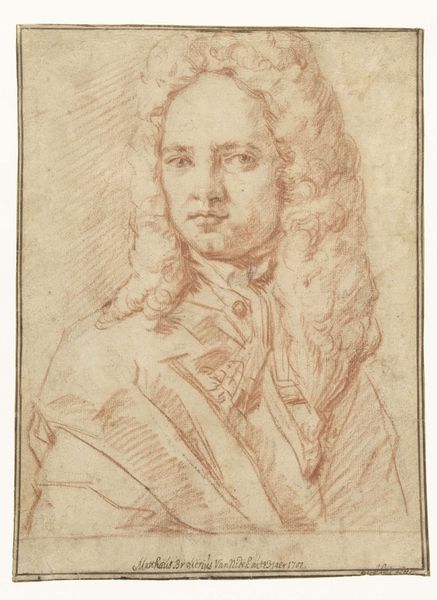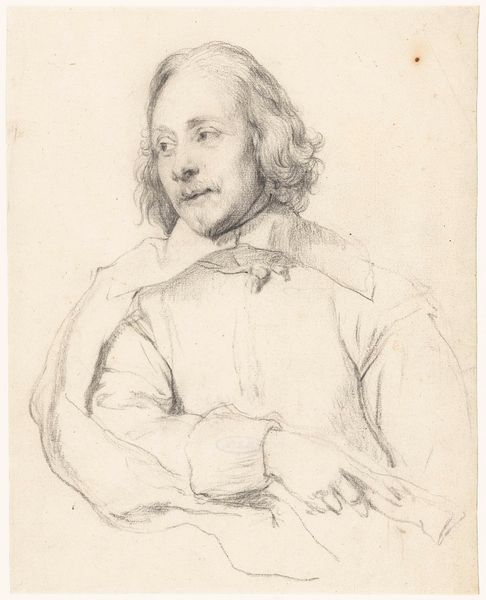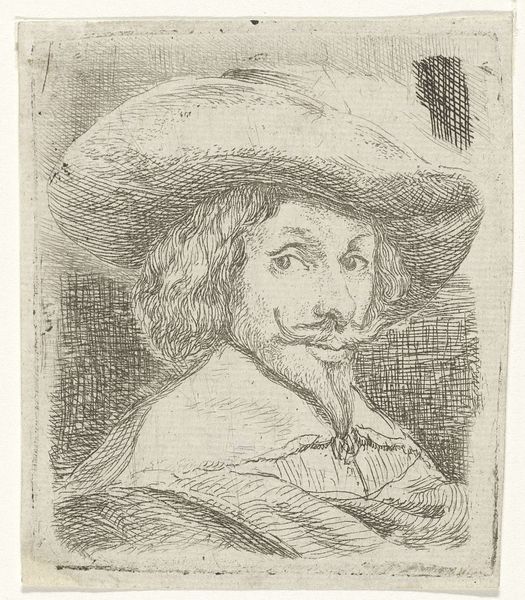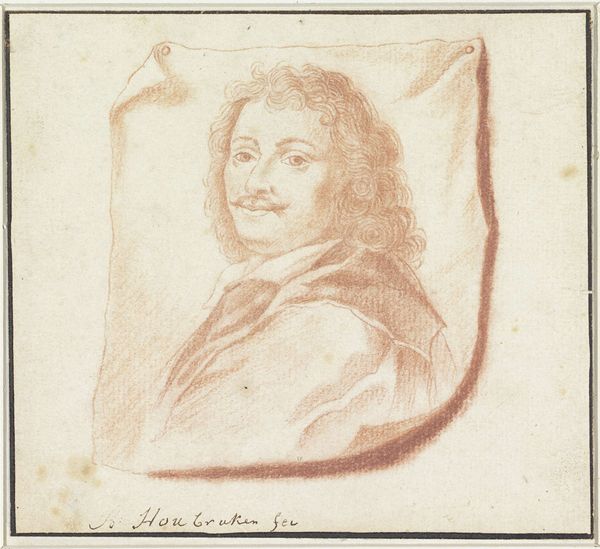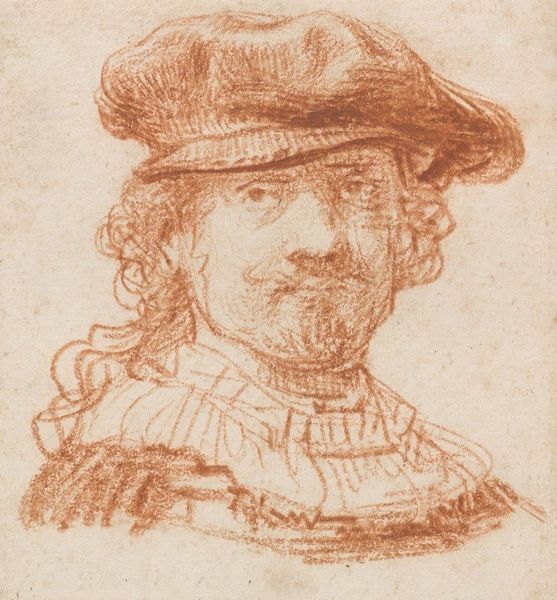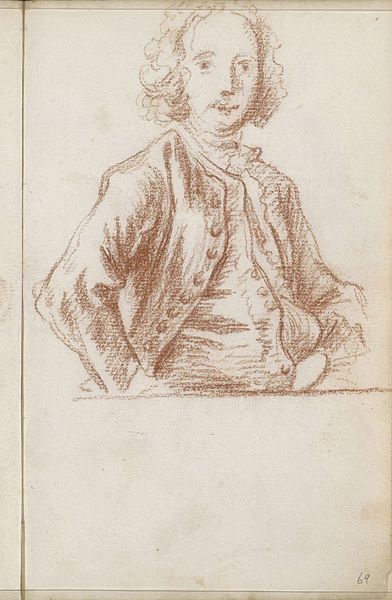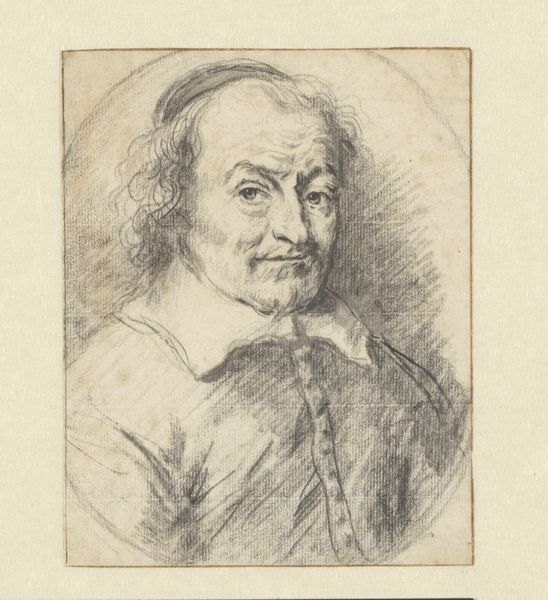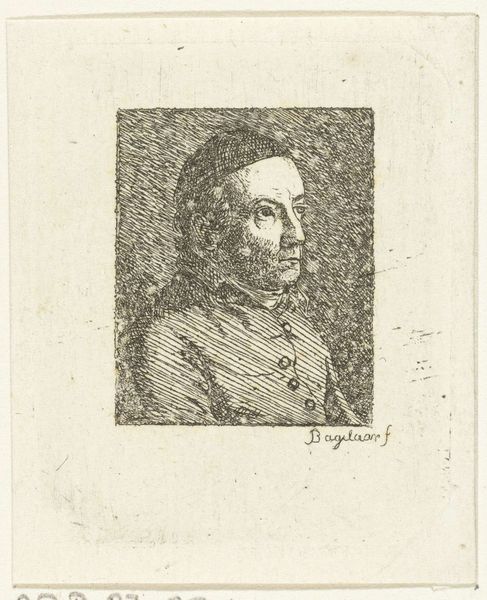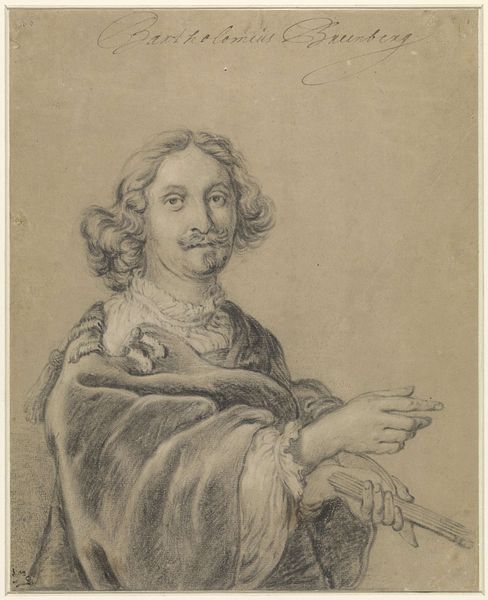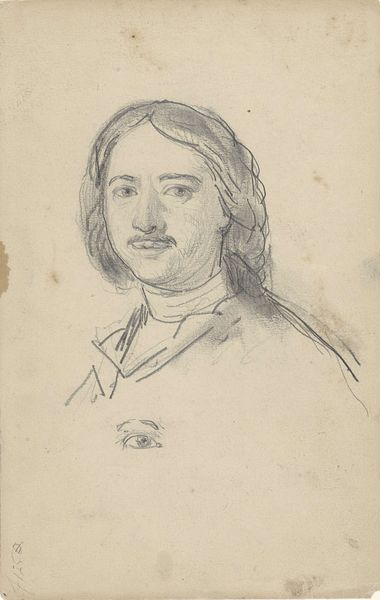
drawing, pencil
#
portrait
#
pencil drawn
#
drawing
#
self-portrait
#
baroque
#
pencil drawing
#
pencil
#
portrait drawing
#
pencil work
Copyright: Public Domain: Artvee
Editor: Diego Velázquez's "Self-Portrait," sketched in pencil in 1639, feels incredibly immediate. The lines are light, almost hesitant, giving it a very personal and intimate feel, as if he quickly captured his reflection. What do you see in this work? Curator: Well, firstly, it’s like peeking over the artist’s shoulder, isn't it? You get the impression Velázquez just grabbed a pencil and paper – almost a rehearsal before a painting. Note how he confidently sketches the face, but then the details of the clothing and pose become more suggestive, as if he is saying: ‘that’s enough for now'. Makes me wonder - what mood was he in? Contemplative, assured? Or perhaps a little restless. Does it suggest a conversation with himself? Editor: Restless, definitely. I’m interested in this 'conversation with himself' idea. Do you think the informality has anything to do with Baroque conventions at the time? Curator: Absolutely. The Baroque loved drama, movement, those swirling emotions, but usually on a grand, theatrical scale. Here, we find that drama distilled into something quieter, more introspective. It's as though the theatricality is there in the loose suggestive marks – the sense of energy, but toned down. Think of it like whispering a secret rather than shouting it from the rooftops. Did he even intend for us to see it? Editor: That whisper definitely comes across! So, despite being a self-portrait in a historical, representational style, it's more about the process and personal reflection, less about immortalizing his likeness. Curator: Precisely. And for me, it's that glimpse into the artist's process that makes it so captivating, still whispering after all these centuries.
Comments
No comments
Be the first to comment and join the conversation on the ultimate creative platform.
